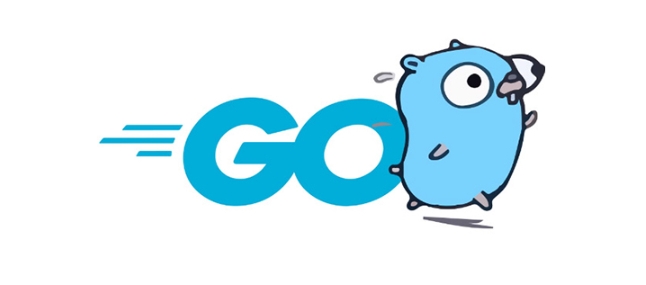Using mutex can ensure that only one goroutine can access shared resources at any time, thereby avoiding race conditions; locking and unlocking is achieved through the Lock() and Unlock() methods of sync.Mutex in Go, which must be used in pairs and it is recommended to use defer Unlock() to ensure release; for example, when multiple goroutines are concurrently incremented counters, locking is required before operating the shared variables, and unlocking is automatically unlocked after the operation is completed; scenarios where mutex should be used include multiple goroutines reading and writing shared data, building concurrent and secure data structures, or avoiding channel overhead; common errors include forgetting to unlock, not protecting all shared data access paths, and copying structures containing mutex, go run -race can be used to detect problems.

A mutex in Go is a synchronization primitive used to protect shared data from being accessed or modified by multiple goroutines at the same time, which could lead to race conditions.

The term mutex stands for mutual exclusion — meaning only one goroutine can access a shared resource at any given time. In Go, mutexes are part of the sync package and are represented by the sync.Mutex type.
How Does a Mutex Work?
A mutex has two main operations:

-
Lock()— acquires the lock. If another goroutine already holds the lock, the calling goroutine blocks (waits) until the lock is released. -
Unlock()— releases the lock so another goroutine can acquire it.
It's cruel to always pair a Lock() with a corresponding Unlock() , typically using defer to ensure the unlock happens even if a panic occurs.
Example: Using a Mutex to Protect a Counter
package main
import (
"fmt"
"sync"
"time"
)
var (
counter = 0
mutex = sync.Mutex{}
)
func increment(wg *sync.WaitGroup) {
defer wg.Done()
mutex.Lock()
defer mutex.Unlock()
counter
fmt.Println("Counter:", counter)
}
func main() {
var wg sync.WaitGroup
for i := 0; i < 5; i {
wg.Add(1)
go increment(&wg)
}
time.Sleep(time.Second) // Give goroutines time to finish
wg.Wait()
}In this example:

- Multiple goroutines call
increment(). - The
mutex.Lock()ensures only one goroutine can modifycounterat a time. -
defer mutex.Unlock()guarantees the lock is released after the function exits.
When Should You Use a Mutex?
You should use a mutex when:
- Multiple goroutines need to read and write shared data.
- You want to avoid race conditions without using channels.
- You're building a concurrent-safe data structure (like a concurrent map).
? Tip : Go encourages communication via channels (
chan), but mutexes are often simpler and more efficient for protecting small critical sections.
Common Mistakes
- Forgetting to unlock (always use
defer mutex.Unlock()). - Locking but not covering all access points to shared data.
- Copying a struct that contains a mutex (this breaks the protection).
Go's go run -race flag can help detect race conditions during testing.
Basically, a mutex is a simple but powerful tool for safe concurrency in Go — just lock before accessing shared state, and unlock when done.
The above is the detailed content of What is a mutex in Go?. For more information, please follow other related articles on the PHP Chinese website!

Hot AI Tools

Undress AI Tool
Undress images for free

Undresser.AI Undress
AI-powered app for creating realistic nude photos

AI Clothes Remover
Online AI tool for removing clothes from photos.

Clothoff.io
AI clothes remover

Video Face Swap
Swap faces in any video effortlessly with our completely free AI face swap tool!

Hot Article

Hot Tools

Notepad++7.3.1
Easy-to-use and free code editor

SublimeText3 Chinese version
Chinese version, very easy to use

Zend Studio 13.0.1
Powerful PHP integrated development environment

Dreamweaver CS6
Visual web development tools

SublimeText3 Mac version
God-level code editing software (SublimeText3)

Hot Topics
 Understanding the Performance Differences Between Golang and Python for Web APIs
Jul 03, 2025 am 02:40 AM
Understanding the Performance Differences Between Golang and Python for Web APIs
Jul 03, 2025 am 02:40 AM
Golangofferssuperiorperformance,nativeconcurrencyviagoroutines,andefficientresourceusage,makingitidealforhigh-traffic,low-latencyAPIs;2.Python,whileslowerduetointerpretationandtheGIL,provideseasierdevelopment,arichecosystem,andisbettersuitedforI/O-bo
 Is golang frontend or backend
Jul 08, 2025 am 01:44 AM
Is golang frontend or backend
Jul 08, 2025 am 01:44 AM
Golang is mainly used for back-end development, but it can also play an indirect role in the front-end field. Its design goals focus on high-performance, concurrent processing and system-level programming, and are suitable for building back-end applications such as API servers, microservices, distributed systems, database operations and CLI tools. Although Golang is not the mainstream language for web front-end, it can be compiled into JavaScript through GopherJS, run on WebAssembly through TinyGo, or generate HTML pages with a template engine to participate in front-end development. However, modern front-end development still needs to rely on JavaScript/TypeScript and its ecosystem. Therefore, Golang is more suitable for the technology stack selection with high-performance backend as the core.
 How to build a GraphQL API in golang
Jul 08, 2025 am 01:03 AM
How to build a GraphQL API in golang
Jul 08, 2025 am 01:03 AM
To build a GraphQLAPI in Go, it is recommended to use the gqlgen library to improve development efficiency. 1. First select the appropriate library, such as gqlgen, which supports automatic code generation based on schema; 2. Then define GraphQLschema, describe the API structure and query portal, such as defining Post types and query methods; 3. Then initialize the project and generate basic code to implement business logic in resolver; 4. Finally, connect GraphQLhandler to HTTPserver and test the API through the built-in Playground. Notes include field naming specifications, error handling, performance optimization and security settings to ensure project maintenance
 How to install Go
Jul 09, 2025 am 02:37 AM
How to install Go
Jul 09, 2025 am 02:37 AM
The key to installing Go is to select the correct version, configure environment variables, and verify the installation. 1. Go to the official website to download the installation package of the corresponding system. Windows uses .msi files, macOS uses .pkg files, Linux uses .tar.gz files and unzip them to /usr/local directory; 2. Configure environment variables, edit ~/.bashrc or ~/.zshrc in Linux/macOS to add PATH and GOPATH, and Windows set PATH to Go in the system properties; 3. Use the government command to verify the installation, and run the test program hello.go to confirm that the compilation and execution are normal. PATH settings and loops throughout the process
 Resource Consumption (CPU/Memory) Benchmarks for Typical Golang vs Python Web Services
Jul 03, 2025 am 02:38 AM
Resource Consumption (CPU/Memory) Benchmarks for Typical Golang vs Python Web Services
Jul 03, 2025 am 02:38 AM
Golang usually consumes less CPU and memory than Python when building web services. 1. Golang's goroutine model is efficient in scheduling, has strong concurrent request processing capabilities, and has lower CPU usage; 2. Go is compiled into native code, does not rely on virtual machines during runtime, and has smaller memory usage; 3. Python has greater CPU and memory overhead in concurrent scenarios due to GIL and interpretation execution mechanism; 4. Although Python has high development efficiency and rich ecosystem, it consumes a high resource, which is suitable for scenarios with low concurrency requirements.
 Go sync.WaitGroup example
Jul 09, 2025 am 01:48 AM
Go sync.WaitGroup example
Jul 09, 2025 am 01:48 AM
sync.WaitGroup is used to wait for a group of goroutines to complete the task. Its core is to work together through three methods: Add, Done, and Wait. 1.Add(n) Set the number of goroutines to wait; 2.Done() is called at the end of each goroutine, and the count is reduced by one; 3.Wait() blocks the main coroutine until all tasks are completed. When using it, please note: Add should be called outside the goroutine, avoid duplicate Wait, and be sure to ensure that Don is called. It is recommended to use it with defer. It is common in concurrent crawling of web pages, batch data processing and other scenarios, and can effectively control the concurrency process.
 Evaluating Code Readability and Maintainability: Golang vs Python Perspectives
Jul 03, 2025 am 02:40 AM
Evaluating Code Readability and Maintainability: Golang vs Python Perspectives
Jul 03, 2025 am 02:40 AM
WhenchoosingbetweenGolangandPythonforcodereadabilityandmaintainability,thedecisionhingesonteampriorities.1.Golangoffersstrictconsistencywithminimal,opinionatedsyntaxandbuilt-intoolinglikegofmt,ensuringuniformcodestyleandearlyerrordetection.2.Pythonpr
 Go embed package tutorial
Jul 09, 2025 am 02:46 AM
Go embed package tutorial
Jul 09, 2025 am 02:46 AM
Using Go's embed package can easily embed static resources into binary, suitable for web services to package HTML, CSS, pictures and other files. 1. Declare the embedded resource to add //go:embed comment before the variable, such as embedding a single file hello.txt; 2. It can be embedded in the entire directory such as static/*, and realize multi-file packaging through embed.FS; 3. It is recommended to switch the disk loading mode through buildtag or environment variables to improve efficiency; 4. Pay attention to path accuracy, file size limitations and read-only characteristics of embedded resources. Rational use of embed can simplify deployment and optimize project structure.






